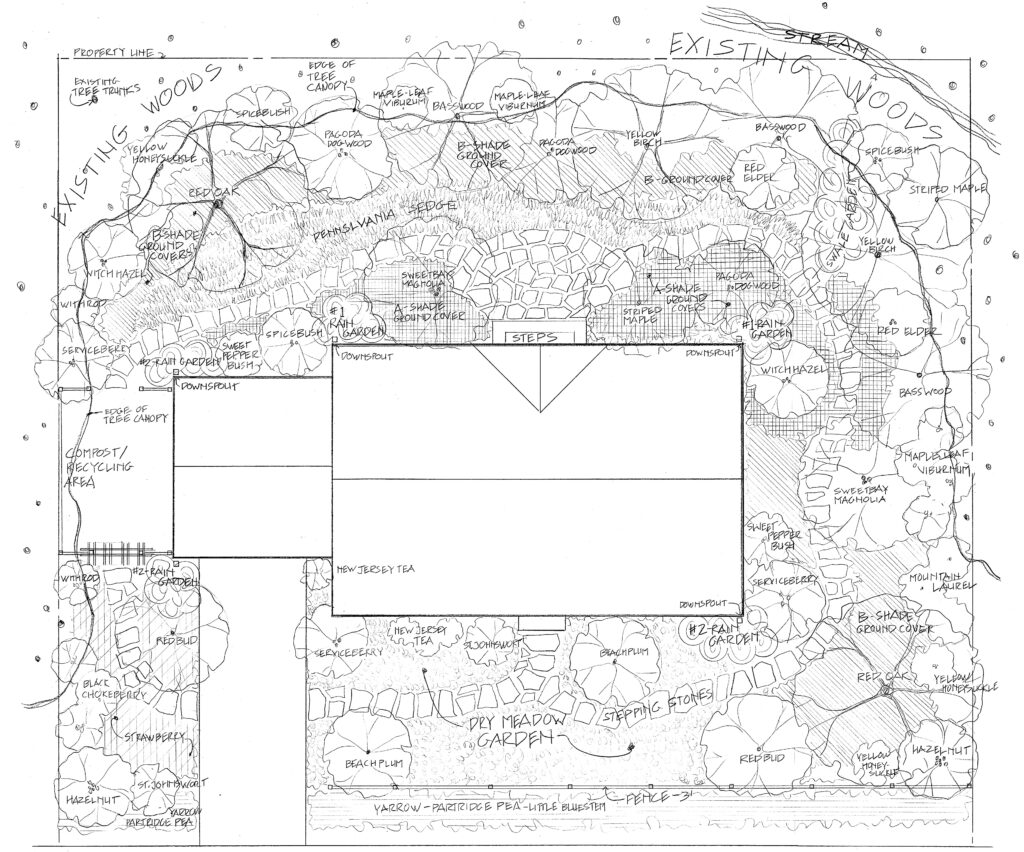
Wild Ones Meet the Designers Webinar
“The Beauty and Benefits of Hedgerows” with Heather McCargo
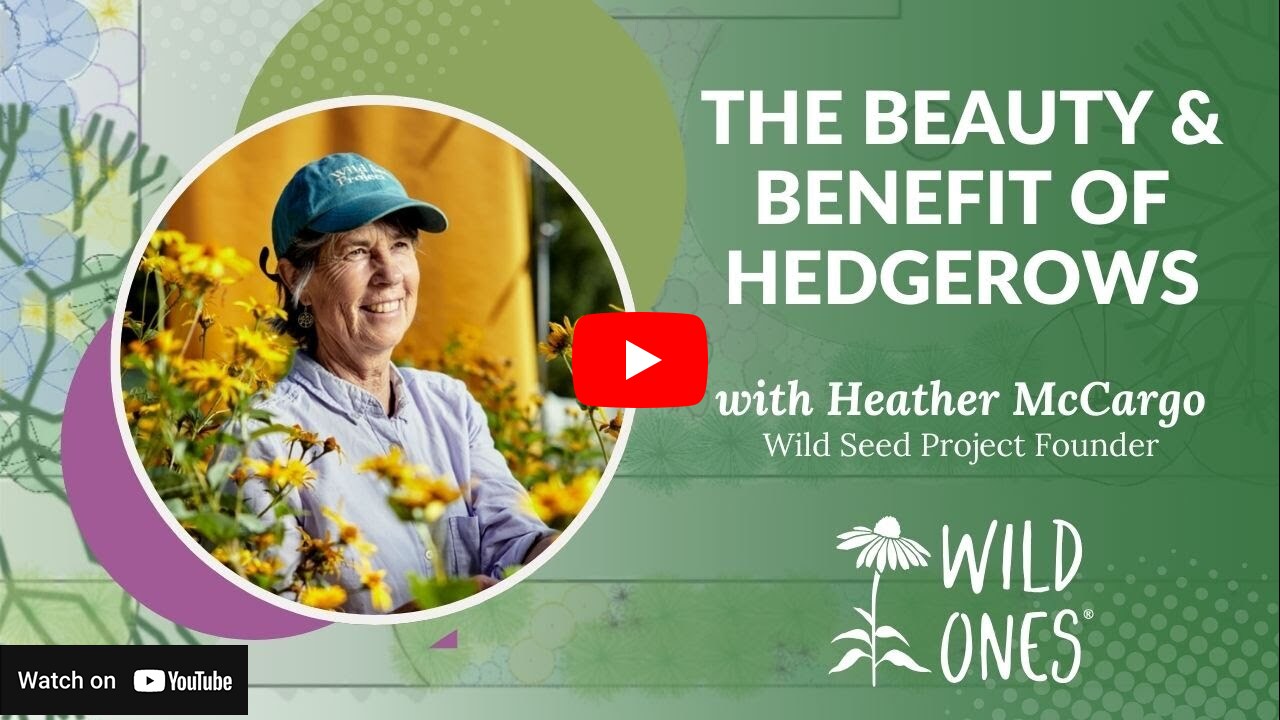
Overview
This design is for a residential property in southern Maine, in the region stretching from Brunswick north of Portland to the south and west to the border of New Hampshire. It is typical of other states in northern and central New England.
Site Conditions and Design Intent
Many residential properties in southern Maine have been carved out of the forest. Most of these woods are have been clear-cut at least once since Colonial times, many repeatedly and are impoverished versions of their past. Many regrown forests in this area are dominated by red maple, but there is also plenty of red oak, with birch, beech, white pine, hemlock, spruce, and fir. Soils range from dry sandy or gravely, to medium moisture loams to wetlands.
Typical with residential development is the removal of the topsoil. Heavy machines have also compacted the soil in a zone around the house site. The street side of the house usually has all the trees removed and if is on the south side it is a hot, dry landscape. Sometimes new topsoil is reapplied, purchased from former agricultural lands and is loaded with weed seeds.
I chose to focus of my design to address these two design challenges. Some of my favorite native plants thrive in the shade and others thrive in lean hot/dry sunny sites. These are conditions that many traditional gardeners struggle most with. Both growing conditions make low-maintenance landscapes once established, and with the heating climate, the shady places are where we are going to want to spend time out of doors.
Planting lots of trees and shrubs to create densely layered landscapes restores the earth more effectively than just a low covering of herbaceous plants, as the vertical year-round above-ground structure of the woody trunks and branches, along with their extensive root systems underground, will return soil life as well as capturing and storing rain. This is more important than ever as the amount of precipitation is increasing in the northeast, often coming down in torrential storms. Wooded landscapes hold the snow cover and frozen soils for longer, also important for climate stabilizing. Woody plants serve as host plants for many species of fauna, especially the butterfly and moth family, so they are important for converting plant growth into food for non-plant-eating animals.
Site Preparation
Sunny southeast and southwest side of the property: I recommend soil solarization with black plastic for 2 months during the spring or summer. If done in the fall, leave it in place until mid-spring to make sure enough heat has killed the weed seeds and any turf. If sod is growing there, you could also use a soil stripper. Since the plant palate are species that thrive in lean dry soil, stripping away the sod is beneficial. If the soil is heavily compacted, you could so a cover crop of buckwheat to break up the heavy soil. Mow and rake off the buckwheat before planting.
Northeast and northwest side from the house to the woodland edge: I recommend covering the growing spaces with cardboard or heavy brown paper covered with either leaves or shredded bark mulch. The trees and shrubs can be planted through this covering, either before or after. The herbaceous ground layer planting needs to wait at least 3 months untill the vegetation underneath is decayed, then holes can be punched through.
All downspouts should have a slight depression of several inches deep by 4-6 feet in diameter for rain garden plantings.
Architectural Elements of a Home Landscape
Stepping stone pathways and a stone patio are particularly nice in a native garden. Gravel paths and gravel patio areas also work well (and stone paving can be added later if desired). If you want a more formal look, brick is an easy DIY material and even lends itself to curvy paths. A low fence makes a nice tidy edge to the street side of the house and meadow garden. All residential designs should include a compost and utility area so people don’t send off their prunings in brown paper bags- ecological gardeners keep all harvested plant growth on site.
Phasing the Plantings
1. I always recommend planting the trees first. They are such a structural aspect of the design and take the longest to grow, so get them in the ground ASAP. Plant young saplings over larger specimens, they cost less and they will grow a much healthier root system than a tree that has been coddled in a nursery for 5 or more years. The same is true of the shrubs.
Trees and Shrubs:
- Red oak (Quercus rubra): A large, long-lived tree that provides essential habitat and food for various wildlife species, including insects, birds, and mammals.
- Basswood (Tilia americana): A medium to large tree known for its fragrant flowers, which attract bees and other pollinators; its leaves provide food for several species of caterpillars.
- Sweet birch (Betula lenta): A medium-sized tree with aromatic bark and leaves; important for various wildlife, including birds and small mammals.
- Smooth serviceberry (Amelanchier laevis): A small tree or large shrub with beautiful spring flowers and edible fruits that attract birds and mammals.
- Eastern redbud (Cercis canadensis): A small tree with distinctive pink flowers in early spring; an excellent choice for adding early-season color and supporting pollinators.
- Beach plum (Prunus maritima): A small, hardy shrub with white flowers and edible fruit; attracts pollinators and wildlife.
- Striped maple (Acer pensylvanicum): A small understory tree with striped bark and large leaves; provides shade and habitat in forested areas.
- Spicebush (Lindera benzoin): A deciduous shrub with aromatic leaves and stems; a critical host plant for the spicebush swallowtail butterfly.
- Sweetbay magnolia (Magnolia virginiana): A small to medium-sized tree with fragrant white flowers and evergreen to semi-evergreen leaves; attracts pollinators and provides habitat.
- Witchhazel (Hamamelis virginiana): A small tree or large shrub with unique, fragrant flowers that bloom in late fall; valuable for pollinators.
- Pagoda/Alternate-leaved dogwood (Swida alternifolia): A small tree or shrub with creamy white flowers that attract pollinators; important for wildlife habitat.
- New Jersey tea (Ceanothus americanus): A small shrub with fragrant white flowers; attracts pollinators and provides cover for wildlife.
- Coastal sweet pepperbush (Clethra alnifolia): A medium-sized shrub with fragrant white flowers; attracts bees and butterflies.
- Witherod (Viburnum nudum var. cassinoides): A multi-stemmed shrub with clusters of white flowers and blue-black berries; provides food and habitat for wildlife.
- Black chokeberry (Aronia melanocarpa): A medium-sized shrub with white flowers and black fruits; attracts pollinators and birds.
- American hazelnut (Corylus americana): A medium-sized shrub with edible nuts that are important for wildlife; supports various caterpillars.
- Shrubby St. John’s-wort (Hypericum prolificum): A compact shrub with bright yellow flowers; attracts pollinators and provides cover for wildlife.
- Maple-leaved viburnum (Viburnum acerifolium): A medium-sized shrub with white flowers and blue-black berries; valuable for wildlife.
- Bush honeysuckle (Diervilla lonicera): A low-growing shrub with yellow flowers; attracts pollinators and provides ground cover.
- Mountain laurel (Kalmia latifolia): An evergreen shrub with beautiful pink to white flowers; provides shelter and nesting sites for birds.
2. For the herbaceous species use first-year plants in plug trays or small pots. These are much more economical and they will establish quickly. A few will bloom the first year (Black-eyed Coneflower and Partridge Pea), others in the second or third year. (You can even grow them yourself, visit the Wild Seed Project website to learn how to grow natives from seed). Herbaceous species tend to move around from where they are first planted. I have included different combinations for different planting areas, but unlike the trees which will stay put, herbaceous plantings will change over time. As ecological gardeners, we can do some editing, but we all need to get away from the intense control that has made modern landscape practices the antithesis of what nature wants. Good structure and edging will keep it looking designed. Have fun!
Dry Meadow Garden
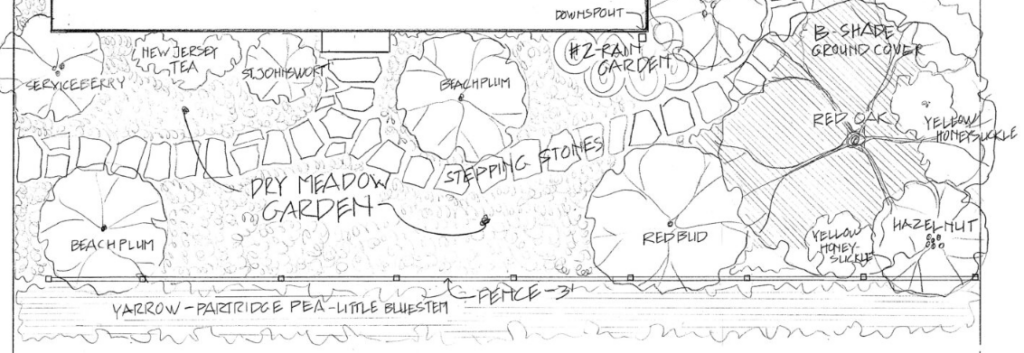
Low-Growing Species for Path Edges
These species are well-suited for the edges of paths in a dry meadow garden, providing color, texture, and ecological benefits while maintaining a tidy, manageable profile.
- Birds foot violet (Viola pedata): A low-growing perennial with distinctive, deeply lobed leaves and bright violet flowers; provides nectar for early-season pollinators and serves as a host plant for several butterfly species.
- Plantain-leaved pussytoes (Antennaria plantaginifolia): A mat-forming perennial with soft, silvery leaves and small, white to pink flower clusters; attracts pollinators and provides ground cover.
- Northeastern/Hairy beardtongue(Penstemon hirsutus): A low-growing perennial with tubular, pale pink to lavender flowers that attract bees and other pollinators.
- Sundial lupine (Lupinus perennis): A small, bushy perennial with tall spikes of blue to purple flowers; an important host plant for the endangered Karner blue butterfly.
- Scotch bellflower/Harebell (Campanula rotundifolia): A delicate, low-growing perennial with bell-shaped blue flowers that bloom throughout the summer; attracts pollinators such as bees and butterflies.
- Butterfly milkweed (Asclepias tuberosa): A vibrant orange-flowered perennial that thrives in dry conditions; a critical nectar source for pollinators and a host plant for monarch butterfly caterpillars.
- Flax-leaved stiff aster (Ionactis linariifolia): A compact perennial with narrow, flax-like leaves and pale blue to lavender flowers; provides late-season nectar for pollinators.
Mid-sized Species
A mix of heights and forms adds depth and interest to the front yard. While none of these plants are very tall,l they offer continuous blooms from early summer to fall, attracting pollinators and wildlife.
- Bradbury’s bee-balm (Monarda bradburiana): A compact perennial with soft pink flowers that attract bees and butterflies; blooms in early summer and tolerates dry conditions.
- Tall anemone/Tall thimbleweed (Anemone virginiana): A native wildflower with white, thimble-shaped flowers in late spring to early summer; provides seeds for birds and adds vertical interest.
- Foxglove beardtongue (Penstemon digitalis): Produces spikes of tubular white flowers in late spring; a favorite of bees and hummingbirds, with attractive dark green foliage.
- Partridge pea (Chamaecrista fasciculata): A fast-growing annual with bright yellow flowers; a host plant for sulfur butterflies and provides nectar for pollinators.
- Spotted bee-balm (Monarda punctata): A unique, aromatic perennial with whorls of pinkish-white flowers spotted with purple; attracts bees, butterflies, and hummingbirds.
- Hoary vervain (Verbena stricta): A drought-tolerant perennial with tall spikes of purple flowers that bloom mid to late summer; attracts butterflies and other pollinators.
- Pale coneflower (Echinacea pallida): A robust perennial with narrow, drooping pink-purple petals; an excellent nectar source for bees and butterflies and provides seeds for birds.
- Black-eyed Susan (Rudbeckia hirta): Bright yellow flowers with dark centers bloom from summer to fall; attracts a variety of pollinators and offers seeds for birds.
- Yarrow (Achillea millefolium): A hardy perennial with flat clusters of white to pink flowers; supports pollinators and has aromatic, fern-like foliage.
- Smooth blue aster (Symphyotrichum laeve): A late-blooming perennial with delicate blue flowers that provide important late-season nectar for pollinators.
- Showy aster (Eurybia spectabilis): Produces vibrant purple-blue flowers in late summer to fall; attracts butterflies and provides color to the garden.
- Downy goldenrod (Solidago puberula): A compact goldenrod with dense clusters of yellow flowers in late summer; attracts bees, butterflies, and beneficial insects.
- Seaside goldenrod (Solidago sempervirens): A salt-tolerant perennial with bright yellow flower clusters; blooms in late summer and is valuable for pollinators.
- Little bluestem (Schizachyrium scoparium): A native grass with blue-green foliage that turns reddish-bronze in fall; provides habitat and food for various insects and birds.
Rain Gardens and Planting Combinations
The northwest side of the home highlights two plantings. Rain gardens and shade groundcovers create a dynamic, resilient landscape under the canopy of native trees like striped maple, pagoda dogwood, and sweetbay magnolia. Flanked by shrubs such as spicebush and witch hazel, this thoughtfully designed backyard habitat captures and filters stormwater while offering year-round interest, supporting native wildlife, and enhancing biodiversity.

Rain Garden #1 Plants
This area features moisture-loving ferns and shade-tolerant perennials. These plants will thrive in the consistently damp conditions created by the rain garden’s design, capturing runoff and filtering water to promote a healthier landscape.
- Cinnamon fern (Osmundastrum cinnamomeum): Robust fern with cinnamon-colored fronds; ideal for wet, shaded areas.
- Blue lobelia (Lobelia siphilitica): Striking blue flowers that bloom late summer to fall; attracts hummingbirds and bees.
- Golden groundsel (Packera aurea): Bright yellow blooms in early spring; forms a lush ground cover.
- White turtlehead (Chelone glabra): White, snapdragon-like flowers that bloom in late summer; host plant for the Baltimore checkerspot butterfly.
- Royal fern (Osmunda regalis): Large, elegant fern that thrives in wet soil; provides lush, green foliage.
Shade Groundcovers “A” Plants
A lush, low-growing layer that thrives in the shaded areas of the north and west sides of the house. These plants help to suppress weeds, stabilize the soil, and provide early-season nectar for pollinators, enhancing the overall ecological value of the garden space.
- Bloodroot (Sanguinaria canadensis): A spring ephemeral with distinctive white flowers; offers early nectar for pollinators.
- Golden groundsel (Packera aurea): Bright yellow blooms in early spring; forms a lush ground cover.
- Foamflower (Tiarella cordifolia): A shade-loving perennial with delicate white flowers; spreads by runners to create a dense mat.
- Wild ginger (Asarum canadense): Low-growing groundcover with heart-shaped leaves; provides dense cover and habitat.
- Green-and-gold (Chrysogonum virginianum): A low, spreading groundcover with cheerful yellow flowers in spring.
- Woodland stonecrop (Sedum ternatum): A succulent groundcover with star-like white flowers; ideal for shade gardens.
- Red columbine (Aquilegia canadensis): A native wildflower with red and yellow flowers that attract hummingbirds.
- Blue lobelia (Lobelia siphilitica): Striking blue flowers that bloom late summer to fall; attracts hummingbirds and bees.
- Christmas fern (Polystichum acrostichoides): A hardy evergreen fern that provides year-round interest and ground cover.
- Blue-wood aster (Heart-leaved aster) (Symphyotrichum cordifolium): Pale blue flowers in late summer and fall; important for pollinators.
Rain Garden #2 Plants
These plantings highlight a variety of flowering perennials that not only manage stormwater but also provide a vibrant, ever-changing display throughout the growing season. Planted in the eastern and western corners of the house, this planting is particularly suited for sunny to partially shaded areas with consistently damp or wet soil.
- Marsh marigold (Caltha palustris): A vibrant, moisture-loving perennial with cheerful yellow blooms in early spring, providing an early nectar source for pollinators. It thrives in consistently wet soils, making it an ideal choice for rain gardens.
- Golden groundsel (Packera aurea): A low-growing perennial that forms a lush ground cover with bright yellow flowers in early spring, stabilizing soil and offering nectar to early-season pollinators.
- Golden Alexander (Zizia aurea): A native perennial with umbrella-shaped clusters of yellow flowers in late spring, attracting beneficial insects and serving as a host plant for the black swallowtail butterfly.
- Blue iris (Iris versicolor): Known for its striking blue-violet flowers, this plant adds vertical interest and thrives in wet conditions, attracting bees and butterflies.
- Swamp milkweed (Asclepias incarnata): An essential plant for monarch butterflies, providing both nectar for adults and a larval host. It produces clusters of pink to mauve flowers and is well-suited to wet garden areas.
- Blue vervain (Verbena hastata): Tall spikes of blue-purple flowers bloom throughout the summer, attracting bees, butterflies, and other pollinators while adding height and texture to the garden.
- Brown-eyed coneflower (Rudbeckia triloba): A late-summer bloomer with bright yellow petals and dark centers, attracting a wide variety of pollinators and providing a splash of color.
Shade Groundcovers “B” Plants
Situated in the northwest corner of the property, this group of groundcovers is part of the natural transition from the forest edge to planted trees and mid-sized perennials. These groundcovers are carefully chosen to thrive in shaded to partially shaded areas, providing a lush understory that complements the taller vegetation around them.
- Downy Solomon’s seal (Polygonatum pubescens): A graceful plant with arching stems and small, bell-shaped white flowers that dangle beneath its leaves in spring, followed by blue-black berries.
- Feathery false Solomon’s seal (Maianthemum racemosum): Features feathery clusters of white flowers at the tip of each stem in late spring, giving way to red berries that add fall interest.
- Red baneberry (Actaea rubra): Produces delicate white flowers in spring, followed by bright red berries that add striking color and are favored by some wildlife species.
- Cranesbill geranium (Geranium maculatum): A hardy perennial with pink to purple flowers in late spring to early summer, offering both beauty and groundcover in shaded areas.
- Jacob’s ladder (Polemonium reptans): Displays clusters of soft blue, bell-shaped flowers in spring, with attractive fern-like foliage that provides groundcover throughout the growing season.
- Showy aster (Eurybia spectabilis): A shade-loving aster with bright lavender blooms that attract late-season pollinators, adding color to the garden in late summer to fall.
- White wood aster (Eurybia divaricata): Produces masses of small, white daisy-like flowers in late summer, thriving in dappled shade and providing late-season nectar for pollinators.
- Zigzag goldenrod (Solidago flexicaulis): A versatile groundcover with clusters of bright yellow flowers that appear in late summer along its zigzagging stems, supporting a variety of pollinators.
- Blue-stem goldenrod (Solidago caesia): Offers delicate yellow flowers in fall along bluish stems, ideal for shade gardens and a valuable late-season resource for pollinators.
- New York fern (Parathelypteris noveboracensis): A spreading fern that forms a dense, bright green groundcover, particularly well-suited for moist, shaded areas.
Swale Garden Plants
A swale in the northern corner of the property is positioned just under the edge of the existing woodland’s tree canopy. The swale slows down this water flowing through the area, allowing it to soak into the ground gradually. This placement takes advantage of the natural shade provided by the tree canopy, which helps reduce evaporation and creates a moist environment ideal for the growth of shade-tolerant, moisture-loving plants.
- Cardinal flower (Lobelia cardinalis): A striking perennial with tall spikes of brilliant red flowers that bloom in late summer, attracting hummingbirds and butterflies. It thrives in wet to consistently moist soil, making it perfect for swale gardens.
- White turtlehead (Chelone glabra): Known for its unique, snapdragon-like white flowers that bloom in late summer, this plant serves as a host for the Baltimore checkerspot butterfly and provides height and structure to the garden.
- Royal fern (Osmunda regalis): A large, elegant fern that grows well in wet soil, offering lush, green fronds that add texture and softness to the garden while providing cover and habitat for small wildlife.
- Cinnamon fern (Osmundastrum cinnamomeum): Named for its distinctive, cinnamon-colored fertile fronds, this robust fern adds visual interest and thrives in wet, shaded areas, contributing to soil stabilization and moisture retention.
Patch Plantings
Several areas on the plan have dense, low-growing ground covers to fill space, suppress, weeds, and provide natural mulching. In the backyard, Pennsylvania Sedge (Carex pensylvanica) serves as a natural, no mow lawn in the shadyt areas along the woodland edge. Wild Strawberry (Fragaria virginiana) makes up a small patch in the yard’s southern corner.
PLANT LIST

Alternate Leave Dogwood(Cornus alternifolia)

American Basswood(Tilia americana)
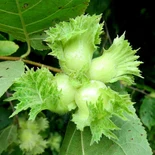
American Hazelnut(Corylus americana)
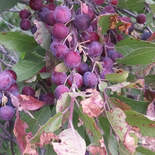
Beach Plum(Prunus maritima)
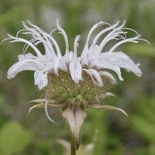
Beebalm(Monarda bradburiana)
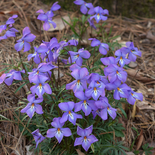
Birdsfoot Violet(Viola pedata)
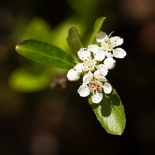
Black Chokeberry(Aronia melanocarpa)
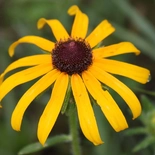
Black Eyed Susan(Rudbeckia hirta)
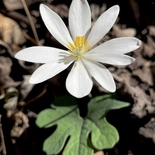
Bloodroot(Sanguinaria canadensis)
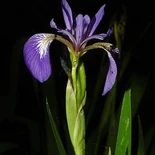
Blue Flag Iris(Iris versicolor)

Blue Vervain(Verbena hastata)
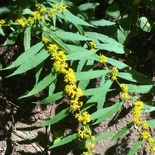
Blue-Stemmed Goldenrod(Solidago caesia)

Brown-eyed Susan(Rudbeckia triloba)
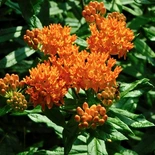
Butterfly Weed(Asclepias tuberosa)
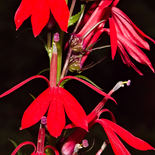
Cardinal Flower(Lobelia cardinalis)
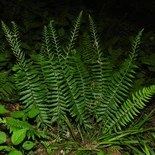
Christmas Fern(Polystichum acrostichoides)
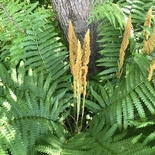
Cinnamon Fern(Osmunda cinnamomea)

Downy Goldenrod(Solidago puberula)
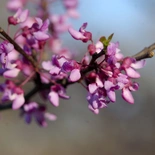
Eastern Redbud(Cercis canadensis)
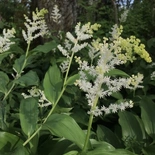
Feathery False Solomon's Seal(Maianthemum racemosum)

Foam Flower(Tiarella cordifolia)
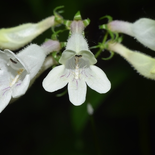
Foxglove Beardtongue(Penstemon digitalis)

Golden Alexanders(Zizia aurea)

Golden Groundsel(Packera aurea)

Great Blue Lobelia(Lobelia siphilitica)
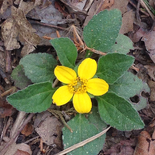
Green and Gold(Chrysogonum virginianum)
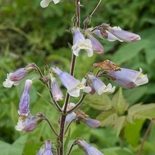
Hairy Beardtongue(Penstemon hirsutus)

Hairy Solomon's Seal(Polygonatum pubescens)
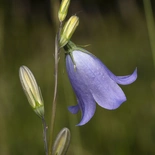
Harebell(Campanula rotundifolia)
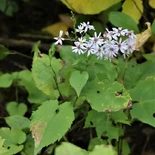
Heart-leaved Aster(Symphyotrichum cordifolium)
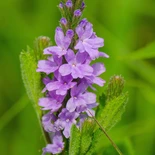
Hoary Vervain(Verbena stricta)
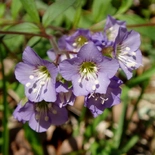
Jacob's Ladder(Polemonium reptans)
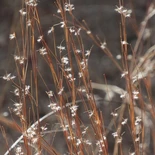
Little Bluestem Grass(Schizachyrium scoparium)

Mapleleaf Viburnum(Viburnum acerifolium)
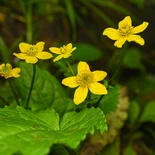
Marsh Marigold(Caltha palustris)

Mountain Laurel(Kalmia latifolia)
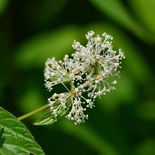
New Jersey Tea(Ceanothus americanus)
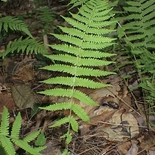
New York Fern(Parathelypteris noveboracensis)
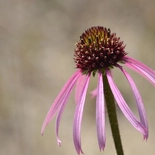
Pale Purple Coneflower(Echinacea pallida)

Partridge Pea(Chamaecrista fasciculata)
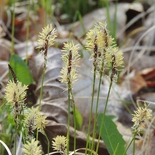
Pennsylvania Sedge(Carex pensylvanica)
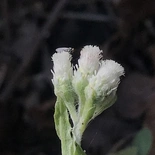
Plantain Pussytoes(Antennaria plantaginifolia)
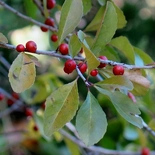
Possumhaw(Ilex decidua)

Red Baneberry(Actaea rubra)

Red Oak(Quercus rubra)
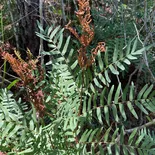
Royal Fern(Osmunda regalis)
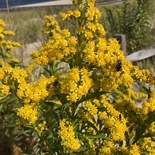
Seaside Goldenrod(Solidago sempervirens)
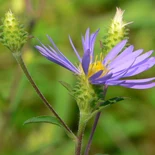
Showy Aster(Eurybia spectabilis)
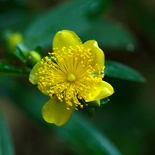
Shrubby St. John's Wort(Hypericum prolificum)

Smooth Blue Aster(Symphyotrichum laeve)

Smooth Serviceberry(Amelanchier laevis)
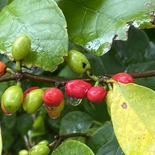
Spicebush(Lindera benzoin)

Spotted Beebalm(Monarda punctata)
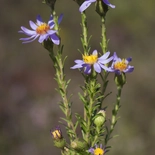
Stiff Aster(Ionactis linariifolius)

Striped Maple(Acer pensylvanicum)

Sundial Lupine(Lupinus perennis)

Swamp Milkweed(Asclepias incarnata)
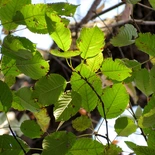
Sweet Birch(Betula Lenta)
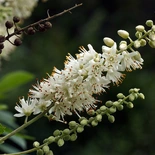
Sweet Pepperbush(Clethra alnifolia)
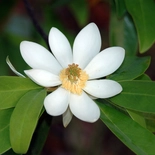
Sweetbay Magnolia(Magnolia virginiana)
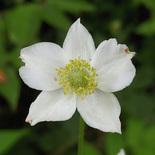
Tall Thimbleweed(Anemone virginiana)
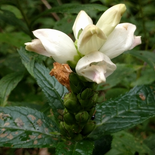
White Turtlehead(Chelone glabra)
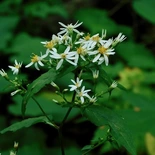
White Wood Aster(Eurybia divaricata)
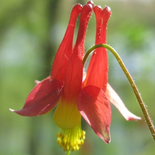
Wild Columbine(Aquilegia canadensis)
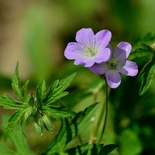
Wild Geranium(Geranium maculatum)

Wild Ginger(Asarum canadense)
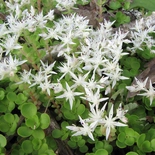
Wild Stonecrop(Sedum ternatum)
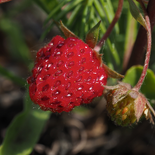
Wild Strawberry(Fragaria virginiana)
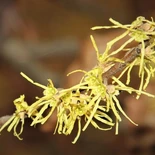
Witch Hazel(Hamamelis virginiana)
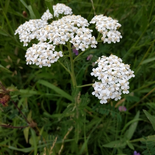
Yarrow(Achillea millefolium)

Zigzag Goldenrod(Solidago flexicaulis)
About the Designer
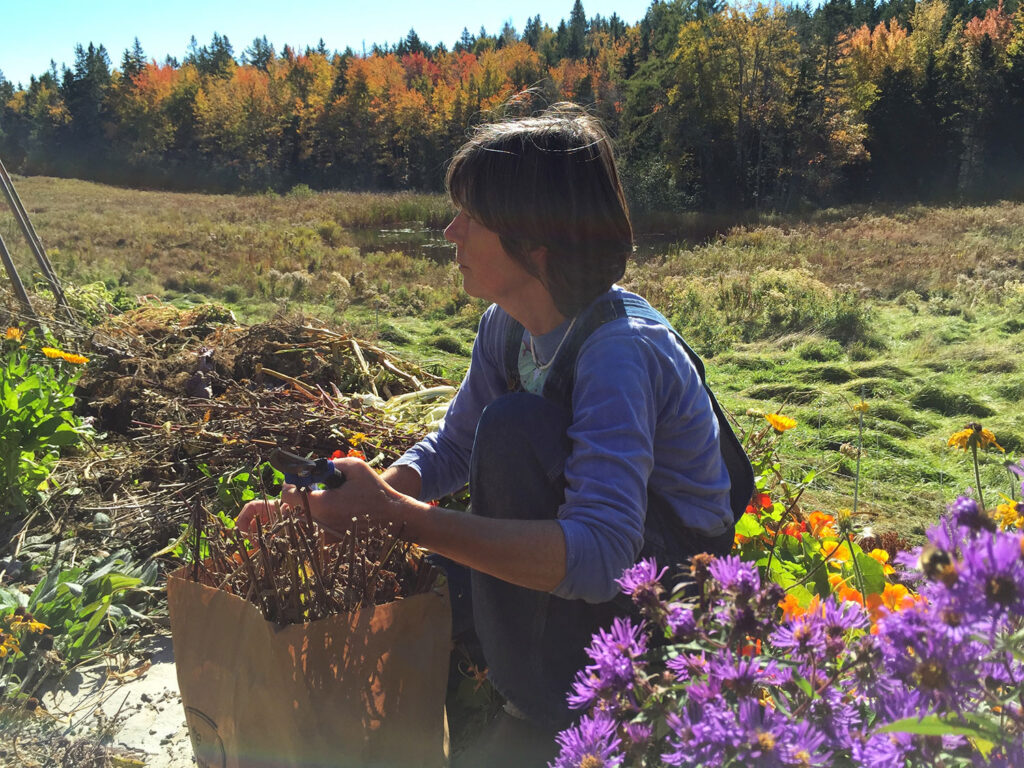
Heather McCargo founded Wild Seed Project in 2014 and served as Executive Director from 2014 to 2021. She now focuses her work on expanding our native seed collection and propagation center.
Heather is an educator with 30 years of experience in plant propagation, landscape design, horticulture, and conservation. A former head plant propagator at the New England Wild Flower Society’s (now Native Plant Trust) Garden in the Woods during the 1990s, Heather has also worked at several landscape architecture/planning firms specializing in ecological design, and has contributed to research projects with USAID, the National Gardening Association, and MOFGA. She has lectured nationally and is widely published in journals and magazines such as Brooklyn Botanical Garden’s “Growing from Seed,” Horticulture, American Nurseryman, Ecological Landscape Alliance, and many others. Heather designed the master plan for the medicinal gardens at Avena Botanicals in Rockport and was the creator of the Bay School Agricultural Arts program in Blue Hill. Heather has a BA in plant ecology from Hampshire College and an MA from the Conway School of Landscape Design.
About Wild Ones
Wild Ones (a 501(c)(3) nonprofit organization) is a knowledgeable, hands-on, and supportive community focused on native plants and the ecosystem that depends on them. We provide resources and online learning opportunities with respected experts like Wild Ones Honorary Directors Doug Tallamy, Neil Diboll, and Larry Weaner, publishing an award-winning journal, and awarding Lorrie Otto Seeds for Education Program grants to engage youth in caring for native gardens.
Wild Ones depends on membership dues, donations and gifts from individuals like you to carry out our mission of connecting people and native plants for a healthy planet.
Looking for more native gardening inspiration? Take a peek at what our members are growing!

